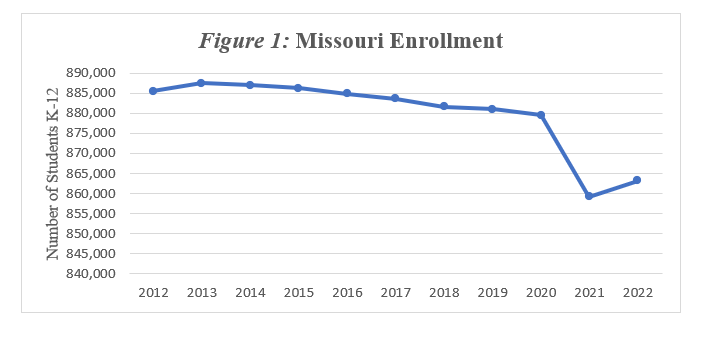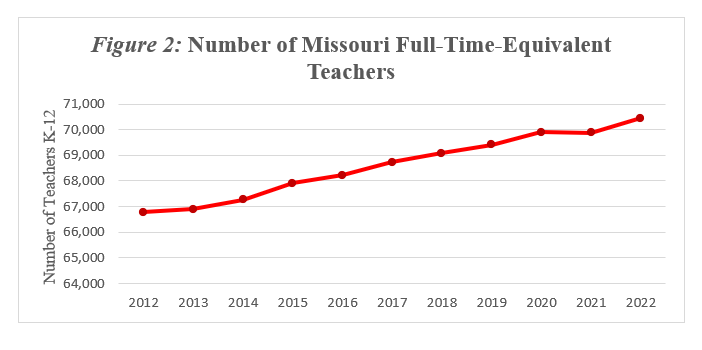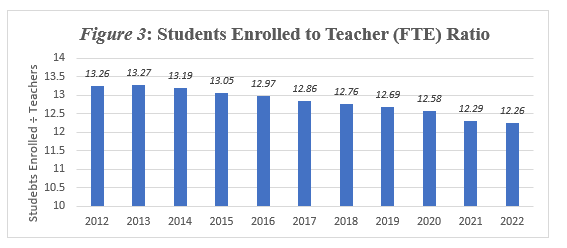The Department of Elementary and Secondary Education (DESE) recently released demographic and faculty data for 2022. Given the current headlines about alleged teacher shortages and teacher salary issues, understanding the current education demographic trends is essential.
Stories about the teacher shortage conjure images of overwhelmed teachers across Missouri struggling to manage overflowing classrooms and a growing student population. If you never looked at the statewide numbers and only at media headlines, you might think the sky was falling. A few examples: “The Profession that Prepares People for all Other Professions is Diminishing (in Missouri),” “Teachers in Missouri are Not Returning to the Classroom,” and “A Look at the Local Impact of the Teacher Shortage Crisis (in Missouri).”
While the statewide trends are relatively minor, they still directly contradict the idea that teachers across the state are in short supply. The figures below depict statewide trends.



Student enrollment numbers have bounced back a bit from the COVID-19 dip and currently sit at 863,000. Nevertheless, prior to the pandemic, enrollment had been falling every year since 2013, and the 2022 number is still not close to the 2020 enrollment figure of 879,000. Conversely, teacher FTE (full-time equivalent) rose during the pandemic, and actually increased by a greater percentage (0.78%) than enrollment (0.41%) in 2022.
Even with the first positive enrollment growth since 2013, the student enrolled to teacher ratio still decreased from 12.29 to 12.26. The national student enrolled to teacher ratio has been decreasing for a long time, from 27 in 1951, to 20 in 1976, and to 16 in 2000. In 2020, the national ratio was 15.2, almost 3 whole students higher than Missouri’s total.
If the student-to-teacher ratio is so low, why are schools feeling the heat? The answer: there is a shortage of teachers to fill specific positions, not a shortage of teachers in general.
Five districts account for 50 percent of teacher vacancies in Missouri, and many of these vacancies are in a few subject areas—including special education, English-language learning (ELL), and mathematics. Allowing school districts to pay teachers more to fill these high-need vacancies—pay differentiation—is something I have discussed before, and could help solve this problem. Luckily, House Bill (HB) 190 is currently progressing through the Missouri Legislature, and it would allow for pay differentiation in our state.
There are districts in Missouri with needs for specific teachers. But that does not mean the whole state has a teacher crisis, and the data make it clear that Missouri is not facing any systemic teacher crisis. It is unfortunate that some Missourians may be getting the wrong impression from some inaccurate headlines, and one would hope that going forward we can have a debate that takes the actual facts into consideration.



